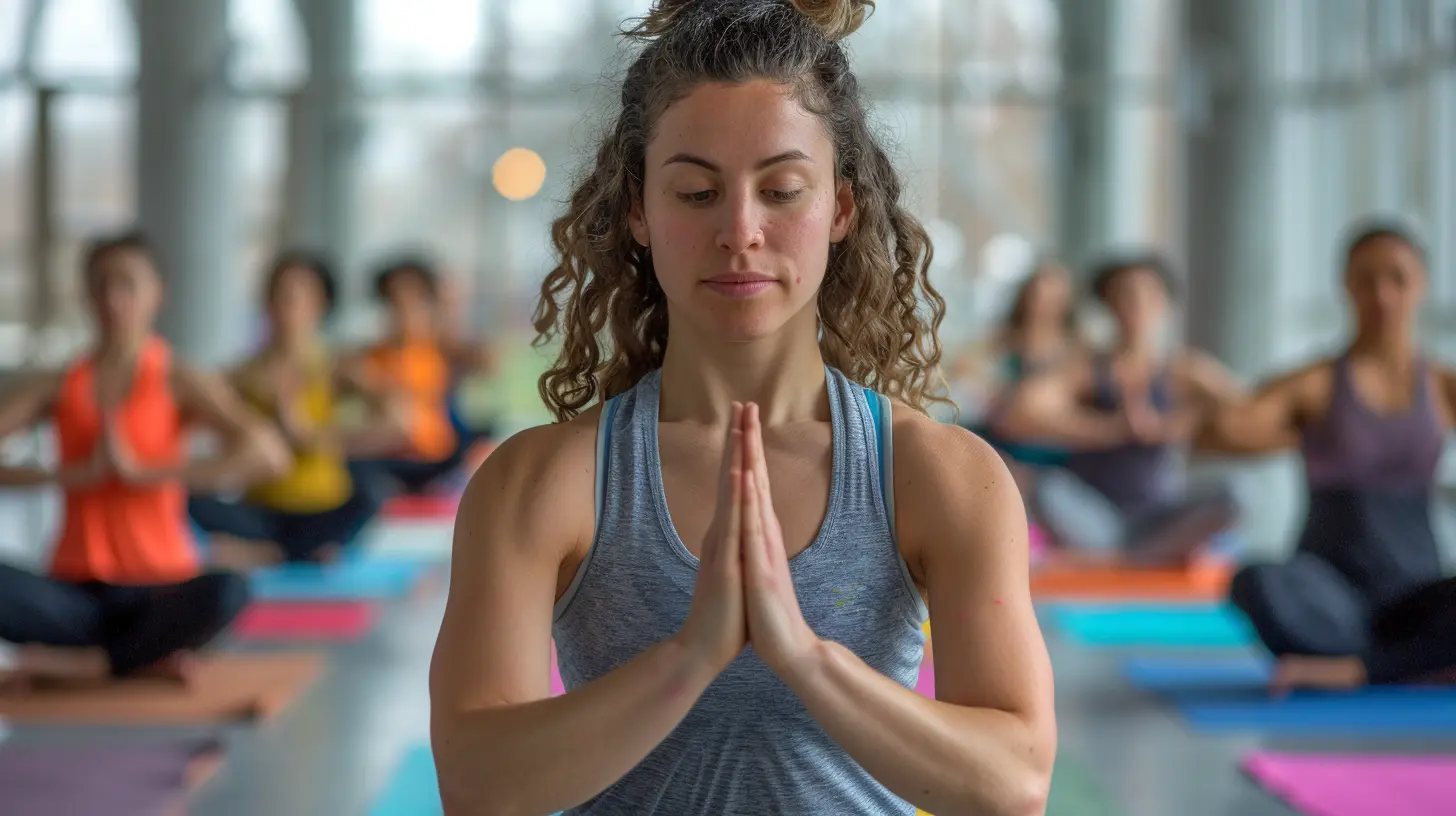Incorporating Yoga into Your Fitness Routine: Why It Matters
19 July 2025
Let’s talk about yoga.
Now, before your mind jumps to candle-lit rooms, chanting, and twisting yourself into a pretzel, hang on for a second. Yoga is so much more than just stretching or finding your "om" moment. Whether you're a die-hard gym rat, a weekend runner, or someone just starting your fitness journey—bringing yoga into your routine can be an absolute game-changer.
And no, you don’t need to be flexible, wear fancy leggings, or balance on your head to reap the rewards.
In this article, we’re diving into why incorporating yoga into your fitness routine matters, and how it can take your overall performance, recovery, and mindset up a notch—or ten.
What’s the Deal with Yoga Anyway?
Yoga has been around for thousands of years, and it's still going strong. That’s not a coincidence. Originally from ancient India, yoga blends physical poses (asanas), breathing techniques (pranayama), and often meditation. Over the years, it's evolved into various styles—from relaxing Yin Yoga to sweat-dripping Power Yoga.At its core, yoga is about connection: mind, body, and breath.
But here’s the kicker—it’s not just for stress relief or flexibility. Modern science and athletes alike are realizing that yoga can actually improve strength, endurance, balance, and even performance in other sports or workouts.
The Fitness-Yoga Combo: Why It Just Makes Sense
So why should you, someone focused on fitness, care about yoga?1. Improved Flexibility (Yes, Even If You Can’t Touch Your Toes)
Let’s start with the obvious one. Regular yoga consistently improves your flexibility. That tight hamstring from lifting? Stiff shoulders from your desk job or CrossFit session? Yoga helps release those knots.Better flexibility doesn’t just help with movement—it reduces injury risk. Imagine your muscles working like rubber bands. The more elastic they are, the less likely they’ll snap under pressure.
2. Better Balance and Stability
Balance isn’t just for gymnasts or dancers. Whether you're squatting, lunging, or sprinting, stability plays a crucial role in your form and efficiency.Yoga poses like the Tree Pose or Warrior III challenge your core and engage those stabilizing muscles that often get ignored during traditional training.
3. Enhanced Core Strength
Your core isn’t just your abs—it’s the entire group of muscles around your midsection. Yoga gives your core a serious workout. Many poses demand more from your core than you’d expect.Take Plank Pose, for instance. It might look chill, but hold it for a minute, and you’ll feel that fire in your belly. And that’s great news—it means you’re building a solid foundation for every movement in your workouts.
4. Faster Recovery and Injury Prevention
Sore after leg day? Tight after a long run?Yoga can speed up your recovery. It helps increase blood flow, reduce lactic acid buildup, and bring much-needed oxygen to tired muscles. Plus, keeping your body mobile and aligned helps avoid those annoying injuries that sideline your progress.
5. Boosted Mental Resilience and Focus
Let’s not forget about the mind.Yoga trains your brain just as much as your body. The breathing, mindfulness, and body awareness that come with yoga build mental toughness. That same focus can help you stay locked in during high-intensity sessions, competitions, or races.
Think of yoga as a mental reset button—it helps you slow down, breathe, and recenter yourself when life (or your training) gets chaotic.
Yoga Types and How They Fit with Your Training
Not every yoga class is created equal. Some will leave you sweating like you just ran a 5K, others will lull you into the most peaceful nap of your life.Here’s a quick breakdown:
🧘♂️ Hatha Yoga (The All-Arounder)
- Great for beginners.- Slow-paced, focuses on basic poses and breathing.
- Perfect for active recovery or rest days.
🔥 Vinyasa or Power Yoga (The Sweaty Kind)
- Fast-paced and physically demanding.- Builds strength and endurance.
- Works great as a high-energy workout replacement.
😴 Yin Yoga (The Deep Tissue Hero)
- Deep, passive stretches held for several minutes.- Amazing for flexibility and recovery.
- Ideal for rest and mobility-focused days.
🧘♀️ Restorative Yoga (Total Chill Mode)
- Uses props to support the body in restful poses.- Think relaxation and stress relief.
- Awesome for mental recovery and deep relaxation.
You can match yoga styles to your weekly schedule like puzzle pieces. Tough training days? Go with Yin or Restorative. Feeling good, want to break a sweat? Power Yoga has your back.
Yoga for Athletes: Real Talk
Let’s take it up a notch. Whether you’re lifting weights, training for a marathon, or playing pickup basketball—your body takes a beating.Yoga offers:
- Muscle symmetry (so you’re not lopsided or overdeveloped in one area),
- Joint stability (goodbye, random knee tweaks), and
- Increased endurance (because focused breathwork boosts your stamina).
Professional athletes from LeBron James to Novak Djokovic swear by yoga. And if it’s good enough for them, it’s definitely good enough for the rest of us.
How to Start Incorporating Yoga into Your Routine
Okay, you’re sold on the benefits. So how do you actually make yoga a part of your fitness plan without overhauling everything?1. Start Small
Even just 10-15 minutes after a workout can make a world of difference. Focus on stretches that target the muscles you just trained.2. Schedule a Yoga Session Weekly
Think of yoga as another training day—but softer. Slot it in like leg day or cardio day. A weekly class or even a YouTube follow-along works wonders.3. Use Yoga as a Warm-Up or Cool Down
Dynamic yoga flows are great for warming up. Poses like Cat-Cow, Downward Dog, and Sun Salutations wake up your body before you go hard. Post-workout? Slow stretches help bring your heart rate down and reduce soreness.4. Listen to Your Body
This isn’t about forcing poses. If your hamstrings are screaming, back off. Yoga is about tuning in, not checking out.The Breath: The Secret Weapon of Yoga
If there's one underrated benefit of yoga that fitness enthusiasts often overlook, it's breath control.Every form of physical training involves oxygen delivery—muscles need it to perform. Yoga teaches you to breathe deeper, slower, and more efficiently.
Ever hold your breath during a heavy lift or run out of gas during a cardio session? That's where yogic breathing (aka pranayama) can help. Controlled breathing can:
- Lower your heart rate,
- Improve oxygen uptake,
- Increase endurance, and
- Help you stay calm in high-pressure moments.
It’s like having a built-in performance enhancer—no supplements required.
Myths About Yoga That Need to Go
Let’s clear the air on some common yoga myths—because honestly, they’re holding people back.❌ "I’m not flexible enough for yoga."
You don’t need to be flexible to start yoga. You do yoga to GET flexible. It’s a journey, not a requirement.❌ "Yoga isn’t a real workout."
Tell that to anyone who's powered through a 60-minute Vinyasa flow. Yoga builds strength, endurance, and focus. Try holding Warrior II for a minute and then let’s talk.❌ "Yoga is only for women."
Biggest myth out there. Yoga’s for humans, not genders. Some of the strongest guys incorporate yoga to balance their training and improve recovery.Real-Life Benefits: What You Can Expect
Stick with yoga for a few weeks, and you’ll start to notice some sweet perks:- Fewer aches and pains
- Better posture
- Improved sleep
- More body awareness
- Quicker recovery time
- Mental clarity and emotional balance
It doesn’t require magic. Just some consistency and an open mind.
Final Thoughts: Why Yoga Deserves a Spot in Your Routine
Think of yoga as the secret sauce your training might be missing. It’s like stretching with benefits—a lot of them. It helps you move better, feel better, and even think better.You don’t have to be all-in yogi overnight. Start small. Be patient. But give it a real shot—and your body (and brain) will thank you for it.
Remember: lifting builds strength, running builds stamina, yoga builds sustainability.
Want a Simple Starting Point? Try This Mini Flow
Here’s a basic 10-minute post-workout yoga routine you can try today:1. Downward Dog – 1 minute
2. Low Lunge (each side) – 1 minute
3. Pigeon Pose (each side) – 1 minute
4. Child’s Pose – 2 minutes
5. Supine Twist (each side) – 1 minute
6. Savasana (lay flat and breathe) – 2 minutes
No equipment, no fuss, just movement and breath.
Bottom Line
Whether you’re chasing gains, speed, endurance, or just trying to keep up with your kids—yoga can amplify your progress and keep you in the game longer. Don’t wait for an injury or burnout to give it a try.Roll out a mat, kick off your shoes, and breathe.
Your mind and muscles have never needed it more.
all images in this post were generated using AI tools
Category:
FitnessAuthor:

Umberto Flores
Discussion
rate this article
1 comments
Echo McClure
Incorporating yoga into your fitness routine fosters balance, flexibility, and mental clarity. It enhances performance while promoting mindfulness, making it an essential complement to any athletic endeavor.
August 14, 2025 at 4:04 AM

Umberto Flores
Thank you for highlighting the key benefits of yoga! Its ability to enhance both physical and mental aspects of fitness truly makes it a valuable addition to any routine.


